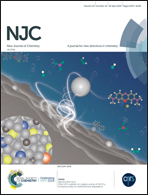The usage of unremovable artefacts for the quantitative “reading” of nanonoises in voltammetry
Abstract
We propose two modified and rather “universal” methods for the quantitative evaluation of electrochemical noises registered in running voltammetric sensor systems in the presence of unremovable artefacts. One approach is based on the discrete geometrical invariant (DGI) method and another is based on the usage of modified Fourier transform. Both approaches did not use model suppositions and were free from the treatment errors. We discussed the reasons for the appearance of the artefacts and showed their applications for increasing the sensitivity and specificity in the detection of some complex organic fluids. As an example, we obtained olive oils from two different producers for their definite differentiation. The selected olive oils from two different countries (Italy and Spain) were placed in working tube electrode cells, and we realized the possibility for the extraction of some useful information from the large amount of nanocurrents. The obtained quantitative parameters allowed the differentiation of URA from possible random noises. These two treatment methods have been proven to be rather “universal” and can be used for the analysis of other URAs having different natures.



 Please wait while we load your content...
Please wait while we load your content...